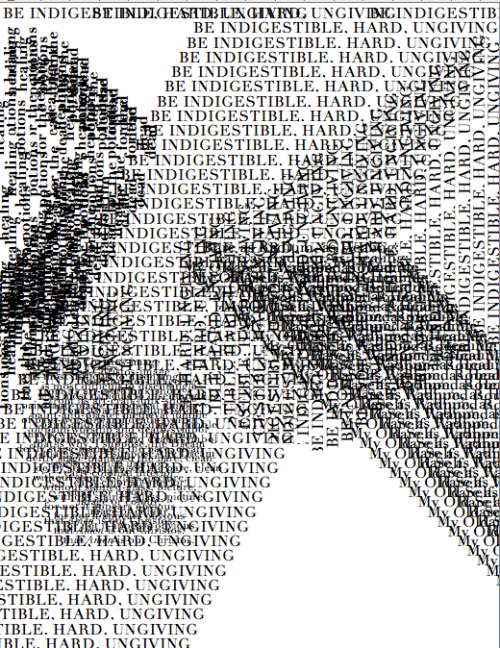I’m going to be talking about the ways Muriel Rukeyser constructs women as sources of power in The Book of the Dead. The prominent female voices in the poem come from two women, Philippa Allen and Mrs. Jones. Both Philippa Allen and Mrs. Jones were actual women who were involved in the fallout from the disaster at Gauley Bridge. These two women are implicated in this event through both history and Rukeyser’s poem.
The third poem “Statement: Philippa Allen” is drawn entirely from the transcript of Philippa Allen’s testimony at the hearing before the House subcommittee. Allen was a social worker assigned to Gauley Bridge and the surrounding areas. This is why she was called to testify. Philippa Allen was, in fact, the first of twelve witnesses to testify before congress on the Gauley Bridge incident.
It makes sense then, that within The Book of the Dead, Philippa Allen is the first voice to speak of the disaster at Gauley Bridge. Rukeyser entrusts Allen’s voice with the task of delivering to the reader the poem’s first encounter of the backstory of the disaster.
Allen testifies, “During the summer of 1934, when I was doing social work down there, I first heard of what we were pleased to call the Gauley tunnel tragedy, which involved about 2,000 men.” She is then questioned, “Have you met these people personally?” To which she answers, “I have talked to people; yes.” Philippa Allen, real life woman and social worker, had an actual connection to the conditions of the workers. She had a personal relationship to the events. And Rukeyser’s collaging of Philippa Allen’s testimony reflects a seemingly purposeful stress on Allen’s credibility through her first-hand knowledge of the events. There is an authority in Philippa Allen’s telling. Rukeyser is constructing Allen as a narrative authority. Perhaps, Rukeyser constructs her this way to reflect the role the “real life” Philippa Allen “played.” In the poem, Allen’s section ends with her voice telling, “I am now making a very general statement as a beginning. There are many points that I should like to develop later, but I shall try to give you a general history of this condition first….” By ending this way, Rukeyser effectively establishes Philippa Allen as a privileged narrator within the poem. This becomes an important contrast to the way Rukeyser establishes other voices within The Book of the Dead. Think, for example, of the doctors later on.
In poem titled “Absalom,” we’re given the narrative of Mrs. Jones, a mother who has lost her three sons to silicosis. This section is comprised of the testimony provided by Mrs. Jones, Philippa Allen, and Mr. Jones. Additionally, “Absalom” includes lines translated and interpreted from the Egyptian Book of the Dead. Here, Rukeyser weaves together the Gauley tunnel tragedy with a mythical framework to shape Mrs. Jones’s experiences into a myth of regeneration and vindication that is based in maternal love. In Mrs. Jones’s narrative the stress is placed on her active role in the process of seeking justice. Mrs. Jones’s first line reads, “I first discovered what was killing these men.” Further down she says, “When they took sick, right at the start, I saw a doctor.” and when she couldn’t get the money the doctors required she “went on the road and begged the X-ray money.” “The case of [her] son was the first of the line of lawsuits.” Mrs. Jones represents the strong mother’s struggle to survive amongst a dying family. She represents the many women whose lives were influenced by the Gauley tunnel tragedy, as they became the physical survivors of the violence that was inflicted. Mrs. Jones’s role in the poem is defined by her activity. She actively seeks justice and compensation for her dead sons and this makes her a source of energy within the poem.
Both Mrs. Jones and Philippa Allen represent the powers of witness. In The Book of the Dead Rukeyser constructs these women in a way that reflects each of them as being agents of history. In this light, perhaps we can think of Rukeyser’s construction of Mrs. Jones and Philippa Allen as reflecting Rukeyser’s notion that poetry can extend the document.
The final poem, “The Book of the Dead,” includes the image of the Carthaginian sculpture of a woman. These stanzas read:
In the museum life, centuries of ambition
yielded at last a fertilizing image:
the Carthaginian stone meaning a tall woman
carries in her two hands the book and cradled dove,
on her two thighs, wings folded from the waist
cross to her feet, a pointed human crown.
Rukeyser chooses not to draw upon American history for finding an exemplary female hero; instead she turns to Egyptian mythology for her representation of female authority and agency. Within the context of the poem’s entirety, the image of this sculpture can be read as allusion to the mother goddess Isis. Notably, in Rukeyser’s poem Isis does not bear the child she is often associated with, but rather she carries a book. This evokes notions connecting women to civilizations as having roles of guardians. This sculpture also carries a cradled dove, which is a representation for being anti-war. Rukeyser’s use of the mythic Isis, while representing motherhood as not being tied to a child, allows for a female symbolic power that is more active, more mobile, and more representative of a woman being an agent in history.

